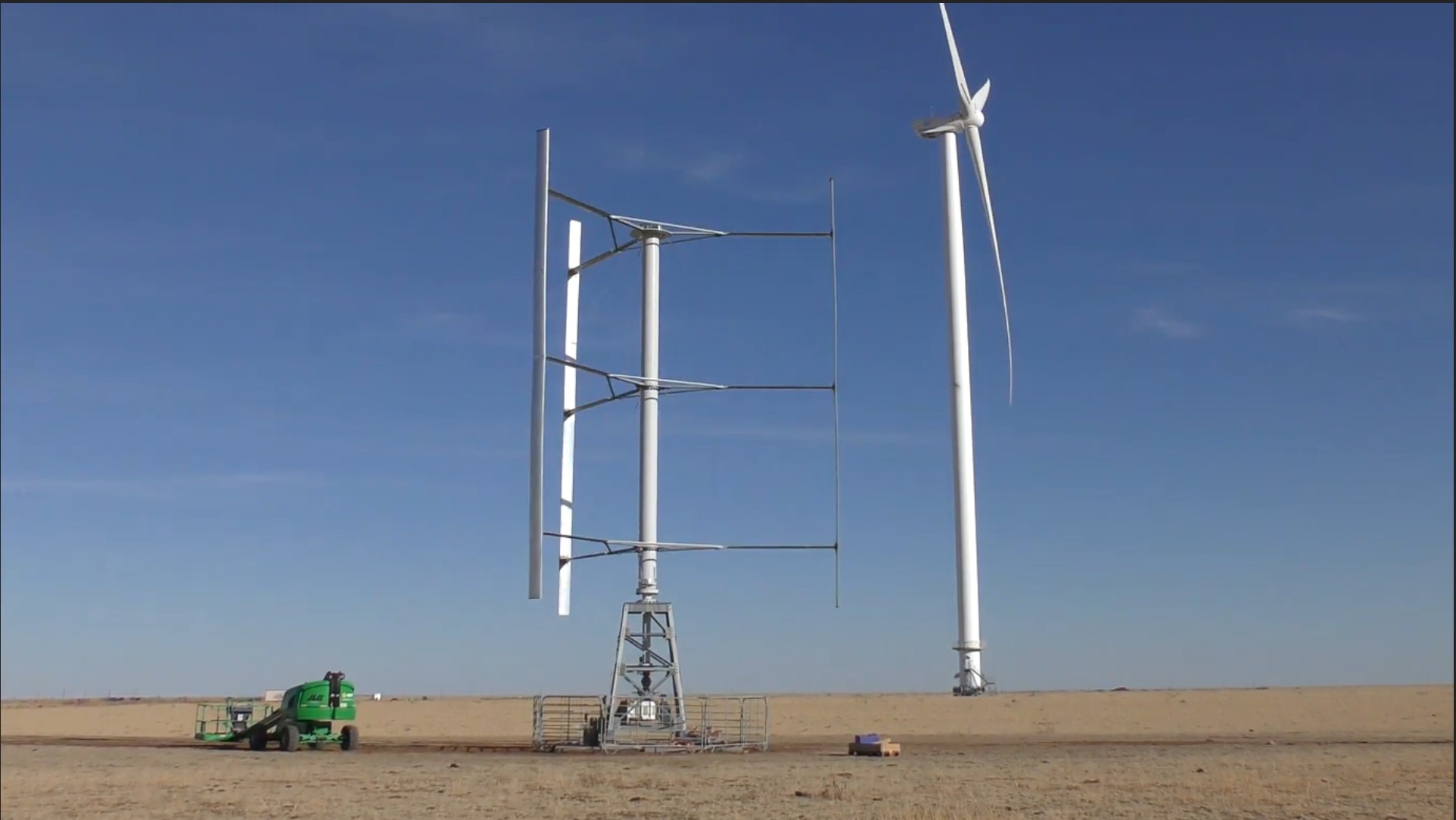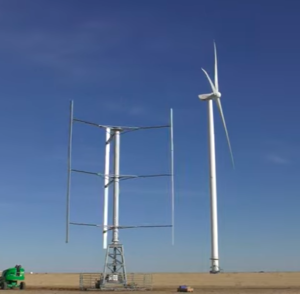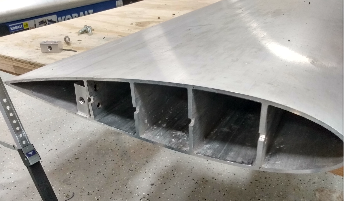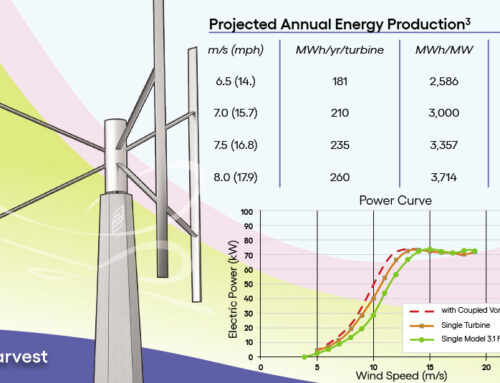We did it! Our Wind Harvester 3.1 is generating power and data!
We did it! Our 3.1 Wind Harvester is generating power and data!

Watch this video as  Mark Chang in Northern California, Antonio Ojeda in Spain and Jeff Willis on-the-ground at the UL Advanced Wind Turbine Testing Facility in Texas bring our Model 3.1 turbine through its 40 RPM test. At this rate, we are only days away from operating 24/7 (with adequate wind) and a month away from establishing a full power performance curve for our Model 3.1. Exciting times!
Mark Chang in Northern California, Antonio Ojeda in Spain and Jeff Willis on-the-ground at the UL Advanced Wind Turbine Testing Facility in Texas bring our Model 3.1 turbine through its 40 RPM test. At this rate, we are only days away from operating 24/7 (with adequate wind) and a month away from establishing a full power performance curve for our Model 3.1. Exciting times!
Some important things to note in the video:
- The blades really start to bow outward in the upper RPM (40 to 50+ RPMs), just like they are supposed to. Essentially, each of the airfoil blades are “flying” around the vertical axis of the Wind Harvester. Check out the profile of the blade and then think about the forces that would be required to bend what are essentially “I-beams” inside the blade. That bending is caused by the kinetic energy of the wind creating lift on the blades. The flying lift on each blade is then converted into torque down the arms to the central mast and drive shaft. All this torque drives the generator, turning at the speed of the rotor above, to produce and push electrons against the current in the grid and produce electricity.

The four internal “walls” are extruded to run the length of the blade. This gives the blade a great deal of rigidity.
- The periodic squeaking sound you hear is from the tightening and loosing of the blade arm support cables during each rotation, along with the settling in of the entire structure during start-up operations. Adjustment of the cables will be required as they stretch and are then tightened during commissioning. ( Our Model 4.0 design will not include support cables and therefore, are not expected to produce this sound during commissioning.
As you know, we originally had a few issues with our emergency braking system, which have been resolved. Our turbines’ primary braking is electrically regenerative, backed up by hydraulic disc brake calipers only used during emergencies or to bring the turbine to a full and locked-in stop. Our new brake configuration has been successful, slowing the entire assembly quickly but smoothly, avoiding excessive strain on the rotor assembly and drive components. We are very pleased with this success.
What you cannot readily see are all the sensors deployed on the turbine rotor and tower structure that are gathering and disseminating operational information on the loads on the blades, arms, shafts, tower, generator, and other components. This dynamic operational data is being collected and stored in a local computer and in the cloud for access by our remote team. It is being analyzed by our engineering team to confirm that our original design algorithms correlate with the empirical data we are actually observing during the present testing. We are even monitoring the temperature in the generator during operation.
Contact: Jen Hoover, jhoover@windharvest.com
Wind Harvest International, Inc. is a California-based renewable energy technology company, founded in 2006. The company makes, sells, and develops projects for its Wind Harvester brand of H-type turbines, the only known product designed to harvest the highly energetic, turbulent wind that blows 15-80 feet above the ground. Wind Harvest’s wholly-owned financial subsidiary Wind Harvest Pilot Project Inc. raises funds and loans it to the parent company.



